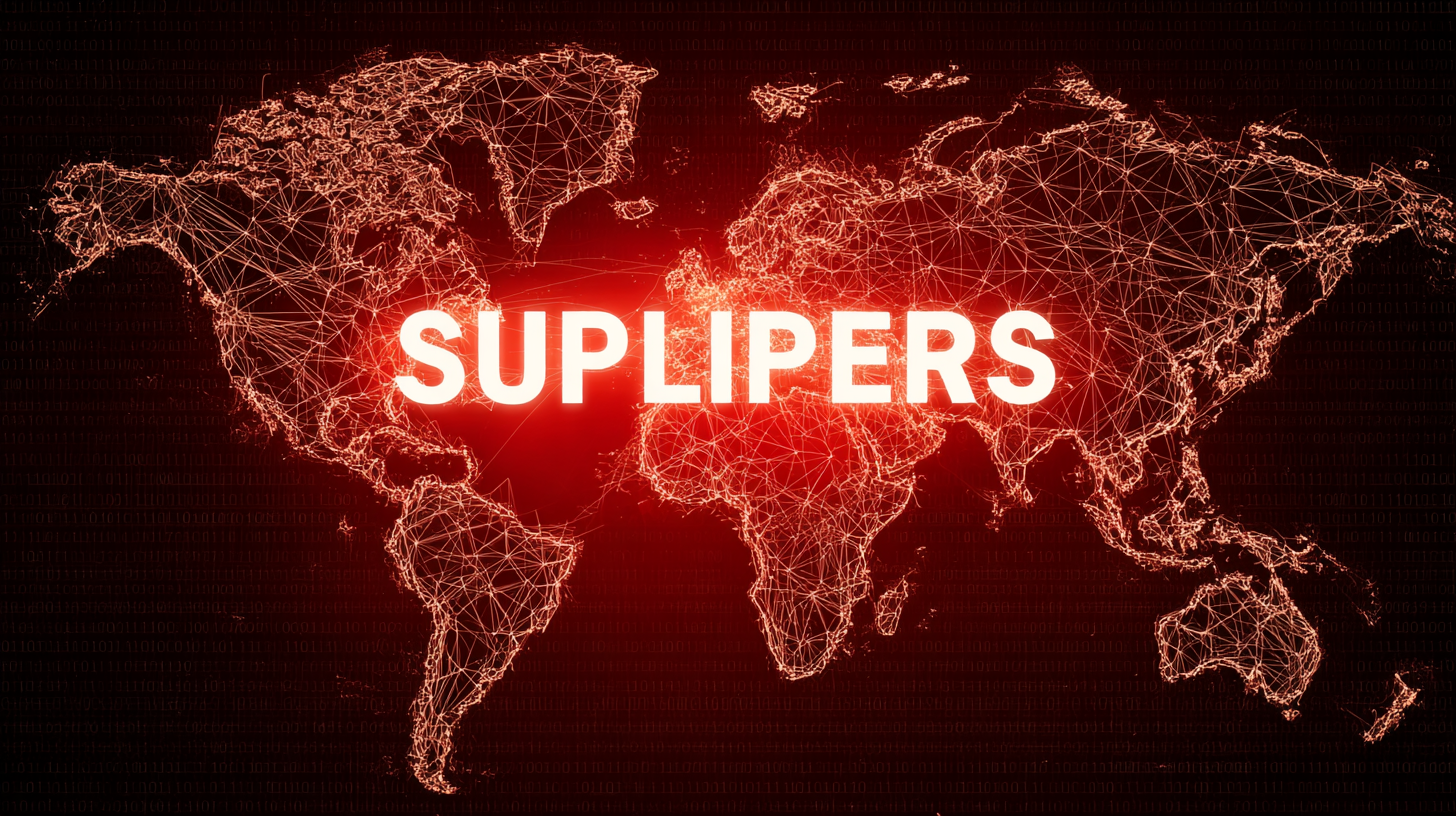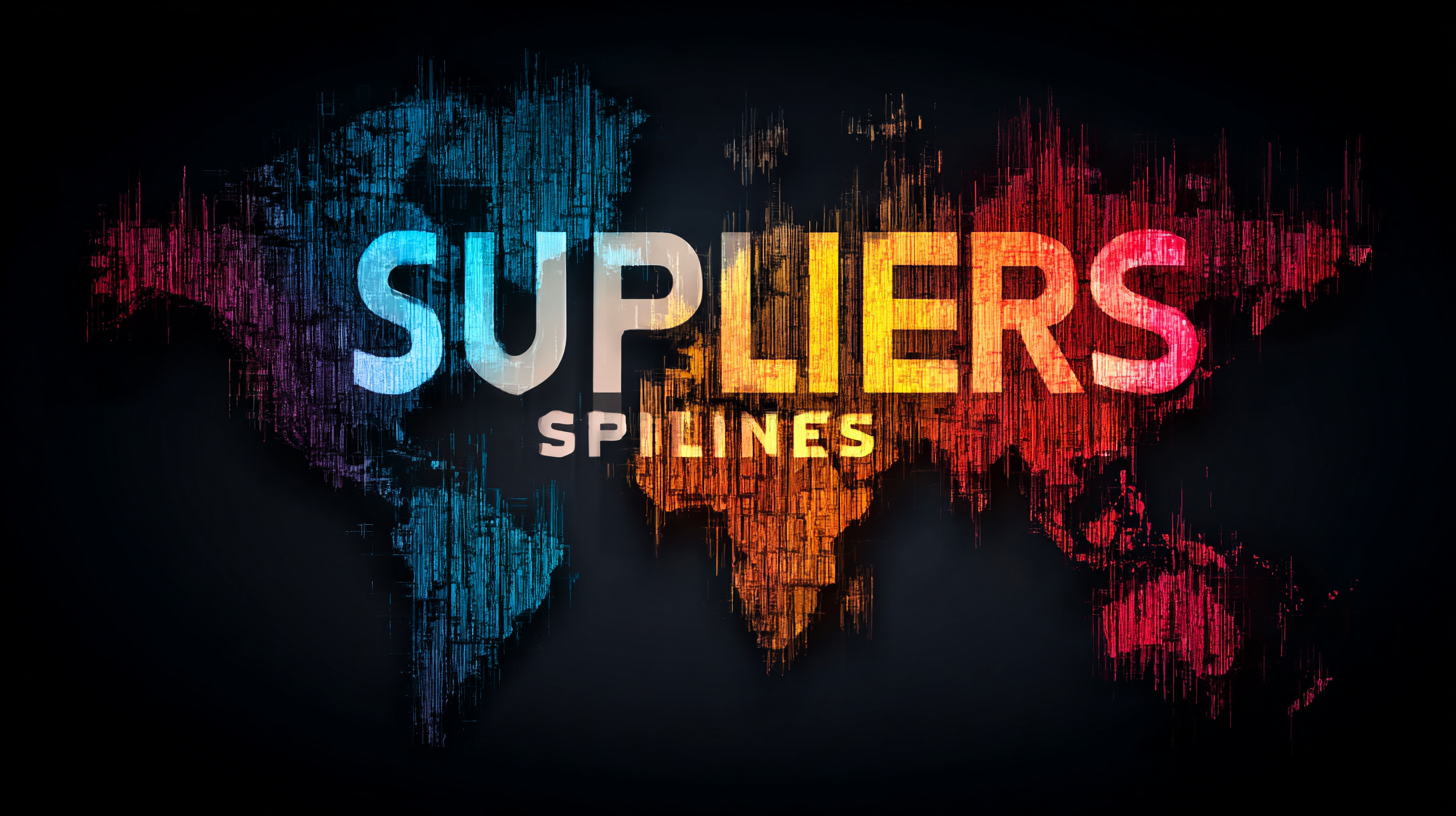
Navigating Best Suppliers Trends in 2025 How to Optimize Global Sourcing Strategies
As we approach 2025, the landscape of global sourcing is evolving at an unprecedented pace, driven by technological advancements and shifting market demands. According to a recent report from McKinsey, nearly 75% of organizations are re-evaluating their suppliers to enhance resilience and sustainability in their supply chains. This shift underscores the critical need for businesses to navigate suppliers more effectively, optimizing sourcing strategies to not only reduce costs but also foster innovation and sustainability.

Companies are increasingly leveraging data analytics and AI to assess supplier performance and mitigate risks, ensuring their procurement processes are robust and future-ready. In this guide, we will explore the emerging trends and best practices that will empower organizations to fine-tune their global sourcing strategies, ensuring they can successfully adapt to the dynamic requirements of the marketplace.
Identifying Key Challenges in Global Sourcing for 2025 and Beyond
As we look toward 2025, global sourcing strategies must adapt to a rapidly changing landscape marked by political, economic, and technological challenges. One major hurdle is the increasing complexity of supply chain disruptions, which can stem from geopolitical tensions, trade policies, and environmental factors. Companies need to develop agile sourcing strategies that allow them to pivot quickly in response to these disruptions. This requires not only a deep understanding of local markets but also the ability to leverage technology for real-time data and analytics.
Another key challenge involves navigating sustainability concerns and meeting consumer demands for ethical sourcing. As stakeholders increasingly prioritize environmental and social governance (ESG) criteria, suppliers must align their practices accordingly. Businesses should consider forging closer partnerships with suppliers who share their commitment to sustainability, ensuring that sourcing decisions reflect not just cost efficiency but also ethical considerations. By prioritizing transparency and responsible sourcing, companies can not only mitigate risks but also enhance their brand reputation in a competitive global marketplace.
Impact of Supply Chain Disruptions on Supplier Selection and Management
In the wake of ongoing supply chain disruptions, identifying and managing the best suppliers has become more critical than ever. These disruptions—stemming from geopolitical tensions, natural disasters, and pandemics—have compelled businesses to reassess their supplier selection criteria. Companies are no longer solely focused on cost; they are prioritizing resilience, flexibility, and reliability in their supplier partnerships. This shift emphasizes the need for a comprehensive evaluation of suppliers that goes beyond price to include their ability to adapt to unforeseen circumstances.
Moreover, companies are increasingly leveraging technology to enhance supplier management practices. Advanced analytics and real-time data tracking allow businesses to stay updated on supplier performance and potential risks. By employing predictive modeling, organizations can foresee challenges in the supply chain and proactively engage with suppliers to mitigate issues. As a result, optimizing global sourcing strategies now requires a pivot towards strategic relationships that foster collaboration and transparency, ensuring a more robust supply chain in the face of ongoing uncertainties.
Leveraging Digital Tools to Enhance Supplier Relationship Management
In 2025, optimizing global sourcing strategies will heavily rely on leveraging digital tools to enhance supplier relationship management (SRM). The integration of AI into Enterprise Resource Planning (ERP) systems presents a significant opportunity for automating routine tasks and providing advanced analytics. This innovation allows businesses to streamline their procurement processes, leading to improved operational efficiency and more effective decision-making.

Moreover, the rise of supply chain management software reinforces the need for companies to adopt sophisticated digital solutions. These tools not only facilitate better communication with suppliers but also enable organizations to anticipate demand and adapt to market changes swiftly. By investing in SRM and combining it with advanced planning and scheduling tools, businesses can create a more resilient and responsive supply chain that aligns with their strategic goals. As we move further into the digital age, organizations that prioritize these technologies will likely maintain a competitive edge in global sourcing.
Sustainability Trends: Adapting Sourcing Strategies to Meet Eco-Friendly Standards
As we move toward 2025, sustainability is becoming a central focus in global sourcing strategies. According to a 2022 report by McKinsey & Company, over 60% of consumers are willing to change their shopping habits to reduce environmental impact. This shift in consumer demand is pushing companies to adapt their sourcing strategies accordingly. In fact, a study by Deloitte highlights that companies with robust sustainability practices can experience a 19% increase in profitability, emphasizing the financial benefits of aligning sourcing methods with eco-friendly standards.

To effectively navigate this landscape, businesses must prioritize partnerships with suppliers who prioritize sustainable practices. A recent survey by the World Economic Forum found that 83% of executives believe that suppliers should adhere to ESG (Environmental, Social, and Governance) criteria. By implementing measures such as reducing carbon footprints and utilizing renewable materials, companies can not only enhance their brand reputation but also attract a growing segment of eco-conscious consumers. As we look towards 2025, embracing sustainability in sourcing is not just an ethical obligation but a strategic imperative for success in today’s marketplace.
Analyzing Data-Driven Approaches to Optimize Cost Efficiency in Sourcing
In 2025, the world of global sourcing is poised to shift dramatically, driven by the increasing availability of data and the necessity for cost efficiency. Companies that leverage data-driven approaches can identify trends, analyze market conditions, and adjust their sourcing strategies accordingly. By utilizing advanced analytics tools, organizations can gain insights into supplier performance, pricing fluctuations, and consumer demand, allowing them to make informed decisions that enhance their bottom line.
One effective strategy involves the implementation of predictive analytics to forecast market trends and supplier risks. This proactive approach enables businesses to optimize their supplier selection process, ensuring they partner with those who not only offer competitive pricing but also demonstrate reliability and quality. Furthermore, integrating machine learning algorithms can refine sourcing processes by identifying patterns in historical data, thus minimizing operational costs and improving overall supply chain efficiency. Embracing these innovations will be critical for companies aiming to stay ahead in the rapidly evolving landscape of global sourcing.
Navigating Best Suppliers Trends in 2025
This chart illustrates the projected cost efficiency percentages of different global sourcing strategies based on data analysis for the year 2025. The data highlights the importance of strategic partnerships and technology adoption in optimizing sourcing processes.
